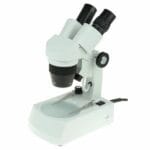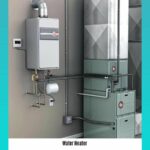Unlocking Touchless Temperature Measurement: Pyro Pyrometers Explained
Ever wondered how temperatures of extremely hot objects are measured without direct contact? That’s where pyro pyrometers come in. These devices act like thermometers with superpowers, using infrared radiation to determine an object’s temperature from a distance. They are essential in industries where things get blazing hot, playing a critical role in manufacturing everything from cars to glass.
How Do Pyro Pyrometers Work?
Instead of relying on physical contact like traditional thermometers, pyro pyrometers tap into the invisible world of thermal radiation. All objects, regardless of their temperature, emit infrared radiation. As an object’s temperature increases, the intensity of its infrared emissions also rises.
Pyro pyrometers are designed to detect and measure this invisible heat signature. They act as high-tech eyes that “see” infrared light, allowing them to gauge an object’s temperature by analyzing the heat it radiates.
Here’s a breakdown of the process:
Capturing Infrared Radiation: A pyro pyrometer uses a lens, much like a camera lens, to focus the infrared radiation emitted by the target object. This focused beam of infrared light holds the key to determining the temperature.
Measuring the Heat: The focused light then reaches a detector within the pyrometer. This detector is highly sensitive to infrared radiation and acts as a heat sensor. The more intense the infrared light, the stronger the signal the detector picks up.
Decoding the Temperature: This is where the magic happens. The pyrometer’s internal signal processing electronics take the detector’s signal and translate it into a temperature reading we can easily understand.
Types of Pyro Pyrometers
Just as there are different types of thermometers for specific applications, pyro pyrometers also come in different varieties.
Single-Wavelength Pyrometers: These pyrometers focus on measuring radiation at a single, very specific wavelength. They are highly accurate for certain materials and are generally more budget-friendly.
Dual-Wavelength Pyrometers (Two-Color Pyrometers): These are the more sophisticated counterparts. They measure radiation at two different wavelengths and compare the ratio. This method helps account for variations in how different materials emit heat, making them more versatile and less prone to errors caused by factors like surface emissivity.
Applications of Pyro Pyrometers
The applications of pyro pyrometers are extensive, spanning various industries:
- Manufacturing: Essential for monitoring temperatures in furnaces, ensuring metals are heated to precise temperatures for shaping and molding.
- Metalworking: Crucial for controlling metal temperatures in processes ranging from large-scale forging to delicate jewelry making.
- Glassmaking: Allow glassmakers to monitor the temperature of molten glass without contact, ensuring optimal viscosity and clarity.
- Automotive: Play a critical role in engine testing, brake system analysis, and quality control of various components.
- Power Generation: Used to monitor temperatures in critical processes within power plants, ensuring efficiency and safety.
- Food Processing: Used to monitor temperatures during cooking, baking, and other processes to ensure food safety and quality.
- Pharmaceuticals: Used in research and development, as well as in manufacturing processes where precise temperature control is critical.
- Scientific Research: Used to study the thermal properties of materials and in various scientific experiments.
Advantages of Pyro Pyrometers
Several key advantages have solidified pyro pyrometers as indispensable tools:
Safety: The non-contact nature of pyro pyrometers is paramount when dealing with extremely hot objects or hazardous environments.
Speed: These devices provide nearly instantaneous temperature readings, which is crucial for processes requiring rapid adjustments.
Temperature Range: Pyro pyrometers can handle a vast temperature spectrum, from extremely low to extremely high temperatures.
Accuracy: With proper calibration, they deliver highly accurate temperature measurements, ensuring reliable results.
Choosing the Right Pyro Pyrometer: Key Considerations
Selecting the right pyro pyrometer depends on the specific application and requirements. Consider these factors:
- Temperature Range: Different pyrometers are designed for specific temperature ranges.
- Accuracy Requirements: The required level of accuracy varies depending on the application.
- Target Material: The emissivity of the material being measured can affect accuracy. Some pyrometers offer emissivity adjustment features.
- Environmental Conditions: Consider factors like dust, smoke, or vibrations, as these can impact certain pyrometers.
- Additional Features: Some pyrometers offer data logging, alarms, or connectivity options, which might be beneficial depending on the use case.
What is a Pyrometer in a Furnace?
In the intense heat of industrial furnaces—used for everything from melting metals to producing ceramics—traditional thermometers simply won’t cut it. This is where furnace pyrometers step in as the heroes of high-temperature measurement. These specialized pyrometers are designed to withstand the extreme conditions inside furnaces while providing accurate, real-time temperature readings from a safe distance.
Types of Furnace Pyrometers
- Optical Pyrometers: These pyrometers rely on the principle that the brightness of visible light emitted by an object is directly related to its temperature. They are often used for very high-temperature applications.
- Infrared Pyrometers: These are more commonly used in furnace settings. They detect the infrared radiation emitted by the heated object to determine its temperature.
- Ratio Pyrometers: These specialized pyrometers take temperature readings at two different wavelengths and compare them. This technique helps minimize errors caused by variations in emissivity, ensuring greater accuracy.
Why Are Pyrometers Essential in Furnaces?
- Safety: They allow operators to monitor furnace temperatures without coming into direct contact with the intense heat.
- Real-time Monitoring: Provide continuous temperature data, enabling operators to make immediate adjustments and maintain optimal furnace conditions.
- Process Efficiency: Accurate temperature control is crucial for achieving desired material properties, reducing waste, and optimizing energy consumption.
- Product Quality: Consistent temperatures are vital for producing high-quality products. Pyrometers help ensure that materials are heated to the correct temperatures throughout the process.
Choosing the Right Furnace Pyrometer
- Temperature Range: Select a pyrometer that can handle the specific temperature range of your furnace.
- Spectral Response: The pyrometer’s sensitivity to different wavelengths of infrared radiation should be compatible with the material being heated.
- Environmental Conditions: Consider factors like dust, smoke, and vibrations that may be present in the furnace environment.
- Emissivity: Different materials have different emissivities, which affect infrared radiation emissions. Choose a pyrometer with adjustable emissivity settings.
What is a Kiln Pyrometer?
For artists and craftspeople working with ceramics, a kiln pyrometer is an indispensable tool. Kilns, used for firing pottery and ceramics, require precise temperature control to achieve desired results. A kiln pyrometer provides accurate temperature readings inside the kiln, ensuring successful firings and preventing costly mistakes.
Types of Kiln Pyrometers
- Contact Pyrometers: These typically use thermocouples—sensors that generate a voltage based on temperature differences.
- Non-Contact Pyrometers (Infrared Pyrometers): These measure infrared radiation to determine temperature, offering a safer and more convenient alternative to contact pyrometers.
Why is a Kiln Pyrometer Essential?
- Precision: Achieve specific firing temperatures for optimal results.
- Consistency: Replicate firings with greater accuracy, leading to consistent quality in your ceramic work.
- Real-time Adjustments: Make adjustments during firing based on temperature readings, preventing underfiring, overfiring, or damaging your pieces.
- Troubleshooting: Identify potential issues with your kiln’s heating elements or temperature control system.
Choosing the Right Kiln Pyrometer
- Kiln Type: Some pyrometers are better suited for specific kiln types or sizes.
- Features: Consider features like data logging, alarms (for high/low temperatures), and ease of use.
- Budget: Kiln pyrometers range in price, so consider your budget and needs.
Key Points of Pyro Pyrometers:
- Non-contact temperature measurement devices detecting thermal radiation.
- Use a lens to focus infrared radiation emitted by objects.
- Employ a sensitive detector to measure the intensity of the infrared light.
- Signal processing electronics translate the detector’s signal into temperature readings.
- Available in single-wavelength and two-wavelength models.
Conclusion:
Pyro pyrometers have revolutionized temperature measurement, offering a safer, more efficient, and more accurate way to measure high temperatures. Understanding the different types of pyro pyrometers, their applications, and the factors to consider when choosing one is crucial for any industry or individual working with processes involving extreme heat. As technology continues to advance, we can expect even more innovative applications and advancements in the field of pyro pyrometry.
Explore Further:
- Novolac: Discover more about novolac, a versatile material often used in high-temperature applications.
- Petabyte to TB: Need a quick conversion? Our petabyte to terabyte conversion tool can help!
- Crypto Quotes’ Red Flags: Avoid Costly Mistakes - June 30, 2025
- Unlock Inspirational Crypto Quotes: Future Predictions - June 30, 2025
- Famous Bitcoin Quotes: A Deep Dive into Crypto’s History - June 30, 2025
















1 thought on “What is a Pyro Pyrometer? Understanding Non-Contact Temperature Measurement”
Comments are closed.